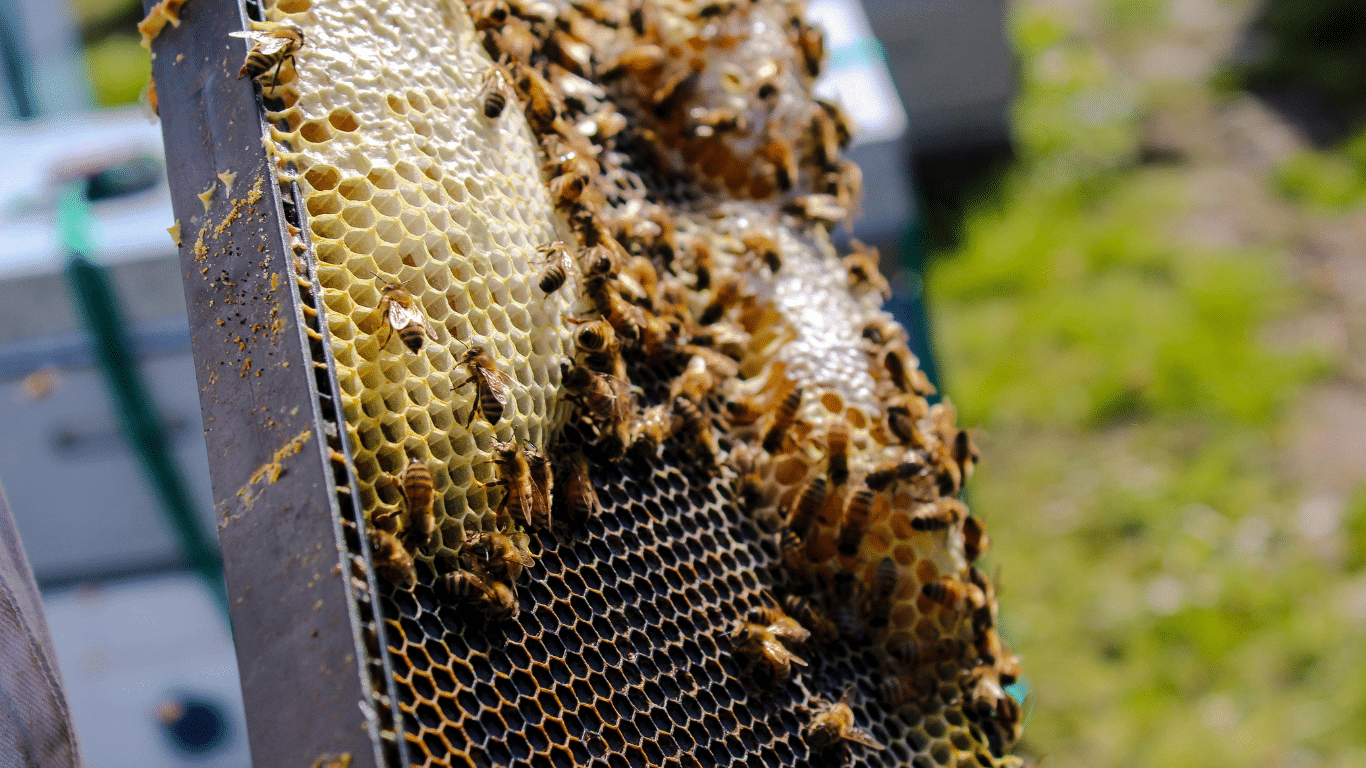Bees
Bees are winged insects best known for their role as pollinators and, famously, for producing honey. Bees are native to every continent except for Antarctica, and are found wherever there are insect-pollinated flowering plants.
Quick facts
- There are over 20,000 species of bees, but only eight produce honey.
- Social bees, such as bumblebees and honeybees, live in complex colonies in hives or nests. In contrast, solitary bees, which make up the majority of bee species, often nest underground and do not form large colonies.
- Bee habitats range from dunes to cliffs, wetlands, grasslands, marshes, meadows and urban areas.
- Bees are closely related to wasps, ants and butterflies, which are all important pollinators for many plant species.
- Honeybees communicate information about food sources through a special dance called a “waggle.”
- People have been practicing beekeeping since 20,000 BCE, and this practice likely made farming as we know it today possible.
- Bees, with their large brain in relation to their body size, show high levels of intelligence. Their complex social systems and the ability to learn through reward-based training have been well documented.

Bees need your help
One quarter of bee species face extinction.
Many scientists and conservationists believe that the planet is currently in its sixth major extinction period, with global biodiversity declining alarmingly, and many critical species, like bees, on the edge of population collapse. Unlike the five extinction periods that preceded it, caused by natural phenomena, the current one is being driven by human activity.
Our survival is intricately linked to global biodiversity conservation. A world without bees would severely impact the health of our ecosystems and our food supply.
What would happen without bees?
We directly rely on bees for food production because bees are essential pollinators for approximately a quarter of a million plant species worldwide, including more than half of crop species. The value bee pollination provides to the agricultural industry is estimated to be 70 billion dollars annually.
Without bees, yields for crops such as apples, almonds and berries would drop dramatically, the variety of foods available to people would decrease, and the prices for available produce would soar as farmers sought alternate and more expensive solutions for pollinating. We would become more reliant on wind-pollinated crops such as corn, wheat and rice, supporting monoculture farming and further reducing global biodiversity.
Monoculture farming is the practice of growing a single crop over a large area and often leads to large-scale biodiversity loss, overuse of groundwater, and soil erosion.
Bees are essential for human food production and ecosystem functioning. Declining bee populations threaten entire ecosystems from the bottom up, as plants lose their source of pollination and can no longer reproduce. This results in a reduction in global plant biodiversity, which has a knock-on effect up the food chain.

Threats to bees
Habitat loss, climate change and widespread pesticide use are among the largest threats facing bees. Agricultural industries spend billions of dollars on pesticides in an attempt to protect crops, but this is directly affecting bee populations. Additionally, land-use change, monocultures and warming temperatures are contributing to bee population declines.
What can you do to help save bees?
- Plant native flowers and plants in your garden.
- Support ethical and local honey producers.
- Support sustainable agriculture by buying products from local and organic sources that do not use pesticides.
- Avoid the use of pesticides and herbicides in your garden.
- Leave bee hives where they are, or ensure safe relocation by employing the services of trained beekeepers when removal is necessary.
- If you find a bee that seems to be struggling, it is most likely fatigued. The best thing you can do is place it on a bee-friendly flower for it to get its energy back up. If there are no bee-friendly flowers, you can mix white sugar and water in a teaspoon or bottle cap and place the bee with the sugar water somewhere safe so it can rest.
- Talk to your family and friends about the importance of bees and find out what your local community, municipality and government does or can do for bees.
- Make informed decisions about the products you buy, the policies you support and your own purchasing and day-to-day behaviors.

